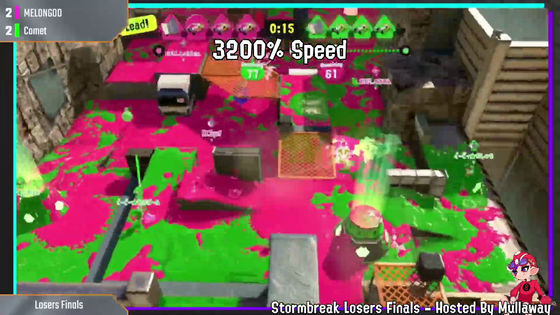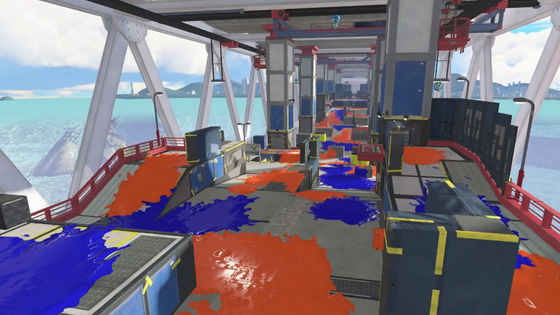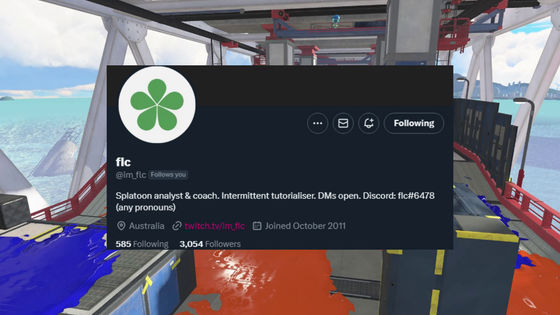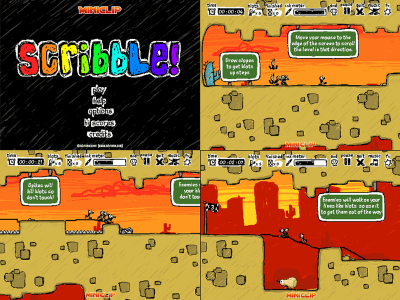Professional gamer & analyst explains ``Why did the stage of Splatoon 3 fail?''

Why Splatoon 3's Maps FAIL (And How To Fix Them)-YouTube
There is one match that has become infamously famous in the Splatoon 3 competitive scene. In one of the losers' repechage matches, the best teams in Japan had a serious battle on the stage called 'Namero Metal'.

It was supposed to be a heated match, but we just stared at each other for 5 minutes and the count of Gachihoko never went beyond '61'.

It seems that this game was a big opportunity to pay attention to the 'structure of the stage'.

So, Mr. Chara, who has been active in the Splatoon competition scene, and Mr. flc, a famous analyst in the same area, asked, 'Why is the stage structure not working?' Is it only damaged?” and “Can the problem be solved?”

There are many dissatisfied voices such as 'boring', 'simple', 'low degree of freedom', and 'like Tetris' on the stage of Splatoon 3.

To understand the structural problems of the stages of Splatoon 3, you need to understand the 'chokepoints'. A chokepoint is a place that the entire team must pass through in order for the count to proceed. A typical example of this choke point is the slope leading to the high ground of Ama University of Art and Design.

There are only two ways to deal with chokepoints. One is a forced breakthrough. This is a method of overwhelming the defending side using a large amount of special weapons.

The other is skipping chokepoints, that is, passing through chokepoints. For example, if you respawn the opposing team by getting a kill in the middle of the stage, you can pass the chokepoint with no risk. In order to skip the chokepoint, it is important to activate the special weapon quickly and not give the other team time to prepare. The more time you give, the weaker the effect of your team's special weapon, and conversely, the other team will be able to activate their special weapon.

In this way, chokepoints can be said to be places that greatly slow down the progress of the game.

Defenders can simply ink from high ground to stock up on special weapons to stop the opposing team. Rather, it may be said that there is nothing else that can be done.

In the case of the Ama University of Art and Design, the steps created to create the chokepoints prevent the defense team from returning to the hillside once they descend from the hill, so the chokepoints restrict the movement of the defense team.

In other words, chokepoints have left neither team with an incentive to be active, flc points out, leaving them unable to find a good reason to face-to-face or move around to do something. I'm here.

On the other hand, in the case of Gachiyagura at Ama University of Art and Design, a stand is set from the center of the stage to climb to a higher ground. This allows the attackers to attack more frankly, and the defenders can choose to get down to the middle of the stage and fight.

However, chokepoints themselves are not the problem. Mr. flc says that choke points are just a structure that has the role of adjusting the flow of the game, and the existence itself is not bad. As for what the problem is, flc points out that in Splatoon 3, ``There are many stages where the entire map is a choke point.''

Three stages, 'Kusaya Onsen', 'Namerou Metal', and 'Masaba Strait Bridge' are typical examples of the entire map becoming a choke point.

These stages are one-way roads with very little freedom as chokepoints can occur anywhere.

These stages are unidirectional, meaning you'll pass the same part of the stage over and over again, so you can't occupy the sides of the stage and pressure the opposing team from two different directions. .

Therefore, flc says, 'It feels as if the whole stage is a win-loss meter for Judge-kun's territory battle.'

Due to this low degree of freedom, whether you are a beginner who has just started playing or a professional player who is active in the competitive scene, you will feel ``stuck'' and ``inconvenient'' in the same way. flc points out that this kind of stage structure limits the player's ``play like yourself'' and ``play you want to do'' because there are so many.

Also, in Splatoon 2, I was able to choose a play style and change my strategy depending on the stage and team composition. However, in Splatoon 3, the entire stage becomes a choke point, and the only factor that determines victory or defeat is how much the team can expand its territory. As a result, the range of play styles, such as choosing a play style that emphasizes mobility, has also narrowed.

Even in other stages, there are basically only two routes to attack the opponent's territory, so you can easily stop the invasion by placing long-range weapons, quick bombs, rollers, etc. . Since the third route that existed so far does not exist in the stage of Splatoon 3 at all, it is easy for the game development to occur such that both teams collide head-on and advance and retreat.

Also, because there are many stages that are like straight roads, even if you try to retreat once, the opponent will follow the same route and attack your own base, so there is also the problem that you will be easily found and killed. In other words, in the stages of Splatoon 3, you have to break through or skip the choke points and keep the position deep in the enemy's line, and if you can't choose between 'attack' or 'not attack at all', I can only say that I made a mistake in choosing Buki, ”said flc.

It seems that more routes are left in the stage reflected in the video before the release of Splatoon 3, and it is not a stage like a straight road. Is the performance of the more meshed with the stage?' flc questioned.
As mentioned above, the current stage structure is one-way, so special weapons such as cue ink and shark ride are not able to demonstrate their performance. For example, in the case of cue ink, it is possible to kill an enemy by easily filling the absorbable ink limit by firing ink in groups.

In the case of shark ride, there is a problem that the enemy is easily killed after activating it because there is an enemy ahead of the attack with shark ride due to the stage structure.

When the energy stand, a special weapon that appeared in Splatoon 3, was announced, all the professionals said, 'Energy stand is dangerous.' We have incorporated ZAP, which has an energy stand as a special weapon, into the composition.

However, in fact, the stage of Splatoon 3 cannot be sandwiched between enemies from two directions on a single road, in other words, since there is only a battle that clashes from one direction, a special that increases mobility like an energy stand Players found it much easier to mow down enemies with high firepower and high durability crab tanks than weapons.

It is unknown why the development team designed such a stage structure, but flc said, ``Maybe they were worried that the game would be too complicated.'' Either way, he points out that the game design and stage design are inconsistent and 'influence each other.'

In addition, this video also proposes how to improve the stage structure based on the above problems, so if you are interested, please check this video. In addition, it has been pointed out that Battera Street, in particular, can be transformed into a good stage with a minimum of adjustments. In addition, other than the stage structure of Splatoon 3, it is very well designed, and it is my favorite game in the first place, so I do not want to criticize Splatoon 3 unnecessarily, but to improve my favorite game. described as criticism.
Related Posts:







